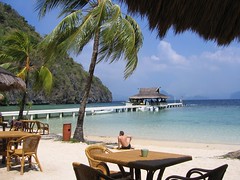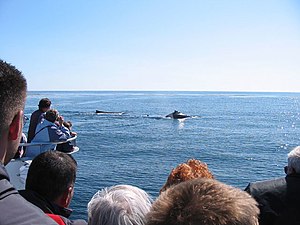By: Frank Johnson
Somewhere in Southeast Asia between the Philippine Sea and the East China Sea, east of Vietnam, south of Taiwan and just north of Indonesia, lies a much neglected but historically and ecologically prized archipelago known as the Philippines. This understated cluster of 7,107 islands is the perfect tropical getaway balanced with just enough colonial cultural intrigue and undulating urban energy to keep you going. Despite the country's somewhat turbulent recent history, the Philippines has
reached a level of stability making no better time than now to travel the wonders of the island-nation.Colonial Legacy, Indigenous Heritage
The first western encounter with the Philippines occurred when Spain's Ferdinand Magellan arrived in 1521, initiating over 300 years of Spanish colonization. A tremendous amount of today's Filipino population is a fraction Spanish, although a negligible number of residents are completely Spanish. The United States took over colonization in 1899 until the Japanese invasion of the strategic islands during World War II. Following Japanese defeat, the Philippines received its independence in 1946. American cultural and military influence still permeates through island culture, although the last U.S. military base has finally been closed. Original human settlement in the region began about thirty thousand years ago when people crossed then-existing land bridges from Asia. Malaysian and Indonesian settlers joined the fray a few thousand years later to constitute a most interesting blend of semi-indigenous cultures still present in the Philippines today. Direct descendents of the first arrivals currently live in the northern province of Zambales.
A Pocketful of Paradise
The nation is divided into three main regions, each with its own metropolitan hub and particular points of interest. Luzon to the north is the most populated region, with the expansive capital city Manila as its main destination. Travel farther north to Banaue where a spectacle of rice terraces had been etched up along the hillside by the Ifugao tribespeople over 2000 years ago. Also, don't miss the truly isolating beauty of Hundred Islands National Park where you may just find a beach all to yourself, as there are literally hundreds to choose from. The central region of Visayas is mostly smaller island clusters and famous for Boracay Island's White Beach and surrounding resort and aquatic activity areas. Make sure to explore the island's less crowded, but just as white-and-turquoise beaches. The southernmost region of Mindanao is home to Davao, the largest city in the world by land area, and the stately Mount Apo, the Philippine's tallest mountain. Enjoy a thrilling river rafting trip in Cagayan de Oro or get back to basic Filipino life in the Tiruray Highlands where the remote shores of Lake Sebu are peacefully inhabited by the T'boli tribe.
While the Getting's Good
With nearly 40,000 kilometers of coastline, a fantasy-like landscape of tropical greenery, and world-class cities offering world-class cuisine and lifestyle, it's hard to imagine that this puddle-jump in Southeast Asia will remain a secret for long. See for yourself why the Philippines is one of the last remaining gems of biodiversity and indigenous culture in this ever-growing region of the world!
For discount airfare to Philippines, visit www.cfares.com, your source for cheap airfare on the web.
Related Sites:Naked Pinay Views, Friendly Remarks , Greeny Fashion, Money Talks , Marc Nand's Blog , Nodding Nanding's Journal, Amusing Disclosure , PC Operatis , Online Shopster
Sites to visit :

![Reblog this post [with Zemanta]](http://img.zemanta.com/reblog_e.png?x-id=e58c45fb-1468-4bec-b359-9457e688a0fd)




![Reblog this post [with Zemanta]](http://img.zemanta.com/reblog_e.png?x-id=1d93e064-ffd5-4fa9-b619-82cc0d9c4d4d)


![Reblog this post [with Zemanta]](http://img.zemanta.com/reblog_e.png?x-id=d9f411f7-9bcf-44eb-9724-980089f47e5e)

![Reblog this post [with Zemanta]](http://img.zemanta.com/reblog_e.png?x-id=e92b55cb-15b9-44cb-a0e0-0731e5a7500e)




